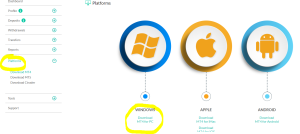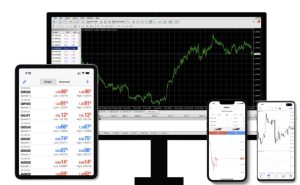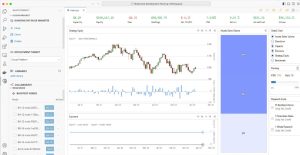Introduction
MetaTrader 4 (MT4) is a widely used trading platform with powerful features for traders to execute trades, analyze financial markets, and manage their trading strategies. In this step-by-step guide, we will walk you through the process of installing MetaTrader 4 on Alibaba Cloud, ensuring you have a seamless trading experience in a secure cloud environment.
Prerequisites:
An Alibaba Cloud account with an active instance (Virtual Private Server).
Windows operating system running on your Alibaba Cloud instance.
Step-by-Step Installation Guide:
Step 1: Connect to Your Alibaba Cloud Instance:
Log in to your Alibaba Cloud console.
Navigate to your Elastic Compute Service (ECS) instances.
Locate your instance and click “Connect” to establish an RDP connection using Remote Desktop Protocol.
Step 2: Download MetaTrader 4:
Open your web browser within the RDP session.
Go to the Fxpimus Broker to register a trading account https://clients.fxprimus.com/en/register?ref=63743
Account Type: Classic and Leverage: 1:500
login https://clients.fxprimus.com/en/login and download the MT4 installer for Windows.

Step 3: Install MetaTrader 4:
Locate the downloaded installer and run it.
Follow the on-screen instructions to install MetaTrader 4.
Choose the installation directory (default is recommended).
Complete the installation process.
Step 4: Launch MetaTrader 4:
Once the installation is complete, launch MetaTrader 4 from the Start menu.
Agree to the license agreement.
Choose the “New Demo Account” option to create a practice account.
Step 5: Configure MetaTrader 4:
In the “Server” field, select a MetaTrader 4 server from your broker (demo server for practice trading).
Enter your login and password provided by your broker for the demo account.
Click “Finish” to complete the configuration.
Step 6: Explore MetaTrader 4:
Once logged in, you’ll see the MetaTrader 4 platform.
Familiarize yourself with the interface, including the Market Watch, Charting, and Trade Terminal sections.
Step 7: Install Expert Advisors (Optional):
If you have Expert Advisors (EAs) or custom indicators, you can install them on MetaTrader 4.
Navigate to the “Data Folder” by clicking on “File” in the top menu and selecting “Open Data Folder.”
Place your EA files in the “MQL4/Experts” folder and indicator files in the “MQL4/Indicators” folder.
Restart MetaTrader 4 to load your EAs and indicators.
Step 8: Start Trading:
In the “Market Watch” window, right-click and select “Show All” to display available trading instruments.
Choose an instrument, right-click, and select “Chart Window” to open a price chart.
Analyze the chart, use technical indicators, and execute trades as needed.
Step 9: Secure Your Instance:
After installing MetaTrader 4, securing your Alibaba Cloud instance is essential.
Set up a firewall to allow only necessary ports for trading.
Regularly update both your operating system and MetaTrader 4 to ensure security patches are applied.
By following this detailed guide, you’ve successfully installed MetaTrader 4 on your Alibaba Cloud instance. You can now access a robust trading platform that empowers you to execute trades, analyze market trends, and refine your trading strategies.
Remember to practice secure trading practices and maintain the security of your cloud instance for a safe and seamless trading experience.
Happy trading!

